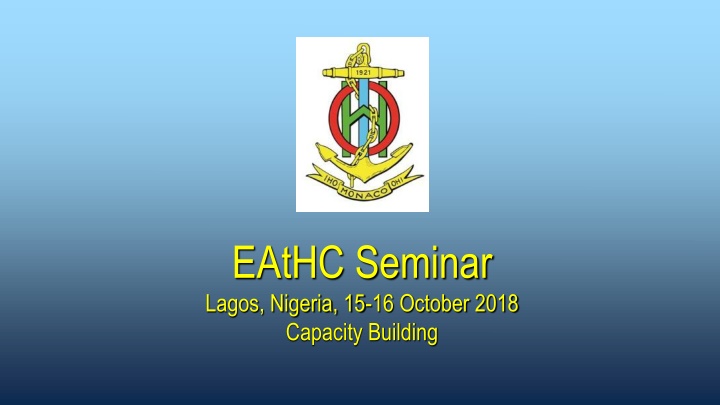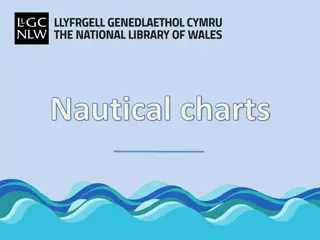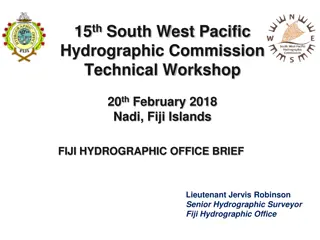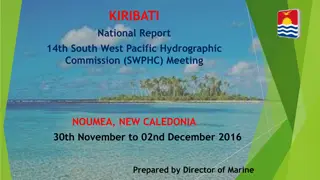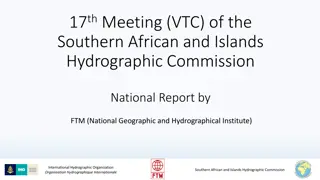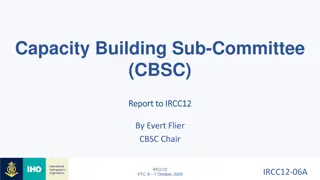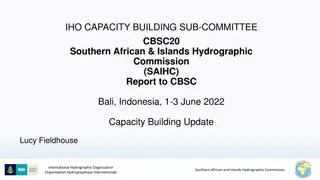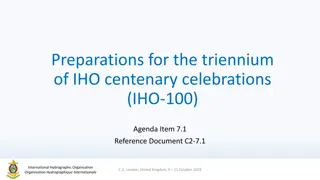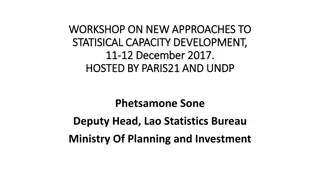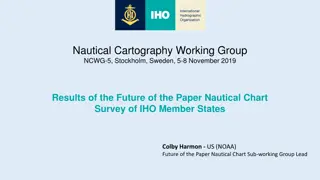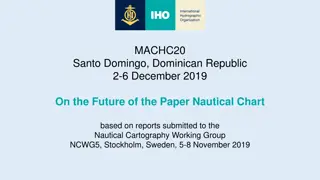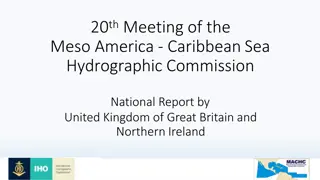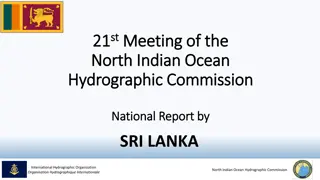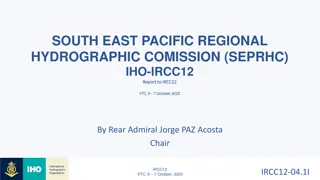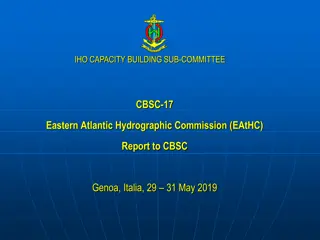Capacity Building for Sustainable Development in Hydrography and Nautical Charting
Capacity building in hydrography and nautical charting involves assessing and assisting in sustainable development to meet international objectives and obligations. It is not just training but a strategic process involving Member States, organizations, and individuals, with a focus on awareness, action, assessment, and analysis. The phases of capacity building include collection and circulation of nautical information to maintain up-to-date charts and publications.
Download Presentation

Please find below an Image/Link to download the presentation.
The content on the website is provided AS IS for your information and personal use only. It may not be sold, licensed, or shared on other websites without obtaining consent from the author.If you encounter any issues during the download, it is possible that the publisher has removed the file from their server.
You are allowed to download the files provided on this website for personal or commercial use, subject to the condition that they are used lawfully. All files are the property of their respective owners.
The content on the website is provided AS IS for your information and personal use only. It may not be sold, licensed, or shared on other websites without obtaining consent from the author.
E N D
Presentation Transcript
EAtHC Seminar Lagos, Nigeria, 15-16 October 2018 Capacity Building
IHO CB Strategy What is Capacity Building?
IHO CB Strategy Capacity Building is NOT training
IHO CB Strategy So what is Capacity Building?
Capacity Building - Concept Capacity Building is defined as the process by which the Organization assesses and assists in sustainable development and improvement of the States, to meet the objectives of the IHO and to meet the obligations and recommendations described in UNCLOS, SOLAS V and other international instruments.
Capacity Building - Vision to provide strategic guidance for IHO capacity building to ensure the optimum contribution to safety of life at sea, to the protection of the environment, and to national economic development.
Capacity Building - Execution Capacity Building is done through the coordinated efforts of: - Member States - International/Regional Organizations - Institutions and Industry - Individuals
Capacity Building - Steps The 4 As Awareness Action Assessment Analysis
Capacity Building - Phases Phases of development of hydrographic surveying and nautical charting capacities: - Phase 1 - Phase 2 - Phase 3
Capacity Building Phase 1 Collection and circulation of nautical information, necessary to maintain existing charts and publications up to date.
Capacity Building Phase 1 Form National Authority (NA) and/or National Hydrographic Coordinating Committee (NHCC). Create/improve current infrastructure to collect and circulate information Strengthen links with charting authority to enable updating of charts and publications Strengthen links with NAVAREA Coordinator to enable the promulgation of safety information Minimal training needed
Capacity Building Phase 1 Phase 1 is the IHO CB Priority!
Capacity Building Phase 2 Creation of a surveying capability to conduct coastal projects and offshore projects.
Capacity Building Phase 2 Establish capacity to enable surveys of ports and their approaches Maintain adequate aids to navigation Build capacity to enable surveys in support of coastal and offshore areas Build capacity to set up hydrographic databases to support the work of the NA/NHCC Provide basic geospatial data via MSDI Requires funding for training, advising & equipment or contract survey
Capacity Building Phase 3 Produce paper charts, ENC and publications independently.
Capacity Building Phase 3 The need shall be thoroughly assessed. Requires investment for production, distribution and updating Alternatively, bi-lateral agreements for charting can provide easier solutions in production and distribution (of ENC through RENCs) and rewards. Further development of MSDI
Capacity Building NHC National Hydrographic Committees Raise awareness of hydrography Spread knowledge nationwide Gather input from stakeholders Establish priorities for surveys Jointly reaching funds
Capacity Building Management - CB Procedures - CB Databases: -Students -Instructors/trainers -Consultants -Integration with other databases - CB Management System
Capacity Building Status - Mature development 2004 2018 - Evolution of the CB Budget from 4 000 to about 900 000 Euros per year - Increasing engagement of partners - Feedback from all stakeholders
Capacity Building Status - Well established courses on: - Awareness: seminars, workshops - Phase 1: MSI and MSI governance - Phase 2: Hydrographic surveying, tides, etc. - Phase 3: Nautical cartography - Other: LOS, etc.
Capacity Building - Practicalities Cycle for CB Activities: Assessment of needs at regional level (CB Coordinator and RHC Chair) Submission of proposals on 1st April YYYY Adjustment of the YYYY CBWP and adoption of the YYYY+1 CBWP by the CBSC (May/Jun YYYY) Endorsement of the CBWPs by IRCC (May/Jun YYYY) Enter into force of YYYY+1 CBWP (1 January YYYY+1)
Capacity Building - Practicalities Make sure you: do a self-assessment of the needs in your country let your CB Coordinator know your needs keep your contact information updated at EAtHC update the IHO Yearbook and C-55 understand the principle of the UN Delivering as one and the country receiving as one
Capacity Building - Practicalities Make sure you: promote the adoption of national legislations, regulations, procedures: o gather survey data (industry, academy, government) o include CB in the contract for surveys o include observers in foreign survey vessels o care for the sensitivities
Capacity Building - Practicalities Make sure you: promote the establishment of a National Hydrographic Committee (NHCC) in your country understand CB Procedure 1 (preparing the submission) understand CB Procedure 4 (priority assessment)
